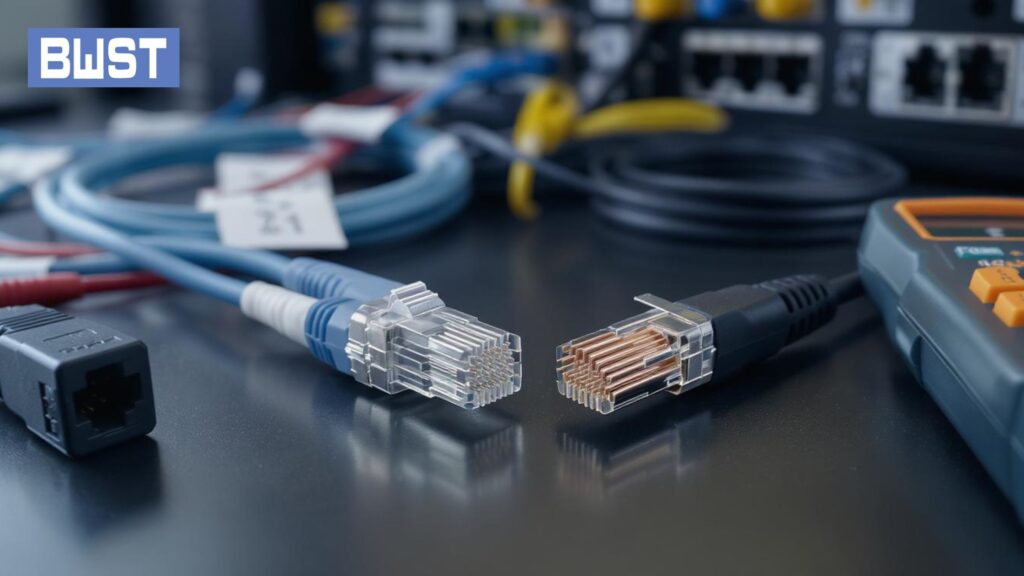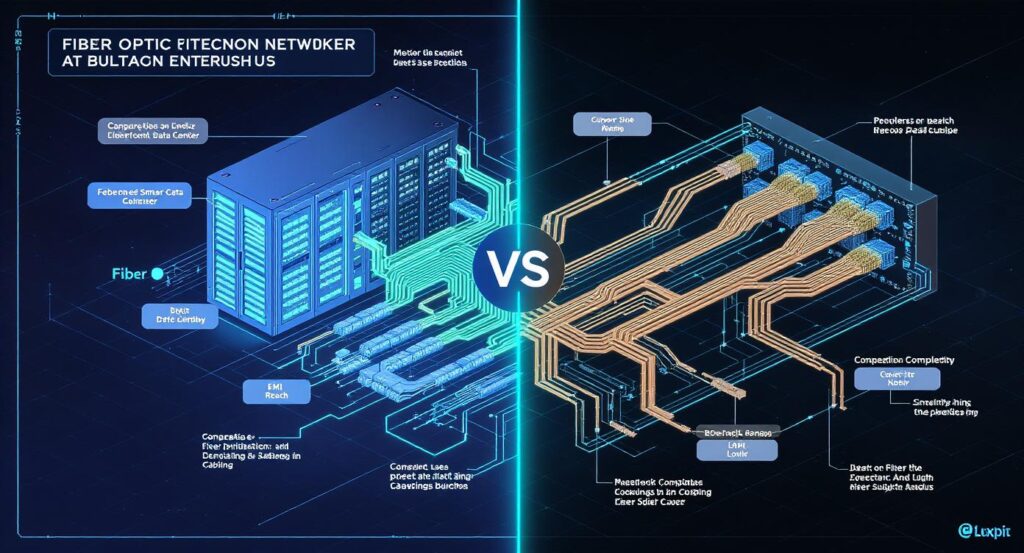Fiber vs copper in 2025 — compare speed, cost, reach, and best deployment scenarios for enterprise networks.

Introduction
The classic debate between fiber and copper cabling continues into 2025 — but the rules have changed. With AI workloads, cloud sprawl, and edge computing rising, infrastructure managers must re-evaluate where and when each cabling medium makes the most sense.
In this guide, we break down the latest performance data, deployment trends, and real-world use cases to help you decide between fiber and copper in modern enterprise environments.
Key Performance Comparisons (2025 Edition)
| Specification | Fiber Optic | Copper (Twisted Pair) |
|---|---|---|
| Speed | Up to 400 Gbps and beyond | Up to 10 Gbps (Cat 6A/7/8) |
| Reach | 2m – 80km | 1m – 100m (typical) |
| EMI Immunity | Excellent (no EMI) | Moderate to poor (susceptible) |
| Installation Cost | Higher upfront, lower long-term | Lower upfront, higher OPEX |
| Durability | Very high (glass core) | Moderate (metal fatigue risk) |
| Power Delivery | No (requires separate cable) | Yes (PoE compatible) |
2025 Deployment Scenarios
When to Use Fiber
- Data Centers: Core-to-core, spine-leaf fabrics, SANs
- Campus Networks: Long-range runs between buildings
- High-Security Zones: Immune to tapping and EMI
- High-Density Racks: Reduced bulk, better airflow
- AI/ML Workloads: Handles ultra-low latency and high bandwidth
When to Use Copper
- Access Layer Ports: End-user connections (PCs, phones)
- PoE Devices: IP cameras, Wi-Fi 6/6E/7 access points
- Short-Run Connections: Within racks or server rooms
- Budget-Constrained Upgrades: Ideal for SMB/branch offices
Enterprise Trends Shaping the Choice
- AI Infrastructure Boom: Driving demand for low-latency, high-bandwidth fiber in compute clusters.
- Wi-Fi 7 & Beyond: Cat 6A and Cat 8 copper support 10GbE+ PoE for high-speed APs.
- Remote Work Security: Fiber offers physical tap resistance.
- Hybrid Cabling: Many enterprises blend fiber backbone with copper edge for flexibility.
2025 Recommendation Matrix
| Use Case | Recommendation |
| Core Networking in Data Centers | Fiber |
| Access Layer in Office Environments | Copper |
| Outdoor/Long-Distance Runs | Fiber |
| PoE Surveillance/IP Cameras | Copper |
| Ultra-Low Latency AI/ML Clusters | Fiber |
| Temporary Patch Deployments | Copper |
| Greenfield Infrastructure Projects | Fiber-preferred |
| Budget-Constrained Upgrades | Copper |
Key Takeaways
- Fiber is the performance leader for speed, reach, and durability — but requires higher initial investment.
- Copper remains dominant in access layer scenarios where PoE and shorter distances are key.
- A hybrid approach (fiber backbone, copper edge) is the 2025 standard for scalable enterprise networks.
- Your use case — not just your budget — should drive the medium choice.
Call to Action
Contact us:
Call us : +91 7439814118
Email us :
Internal Links
- [BW’s Guide to Intelligent Patch Panels]
- [Top 10 iPDU Configurations for 2025]
- [2025 SFP Module Compatibility Chart]

